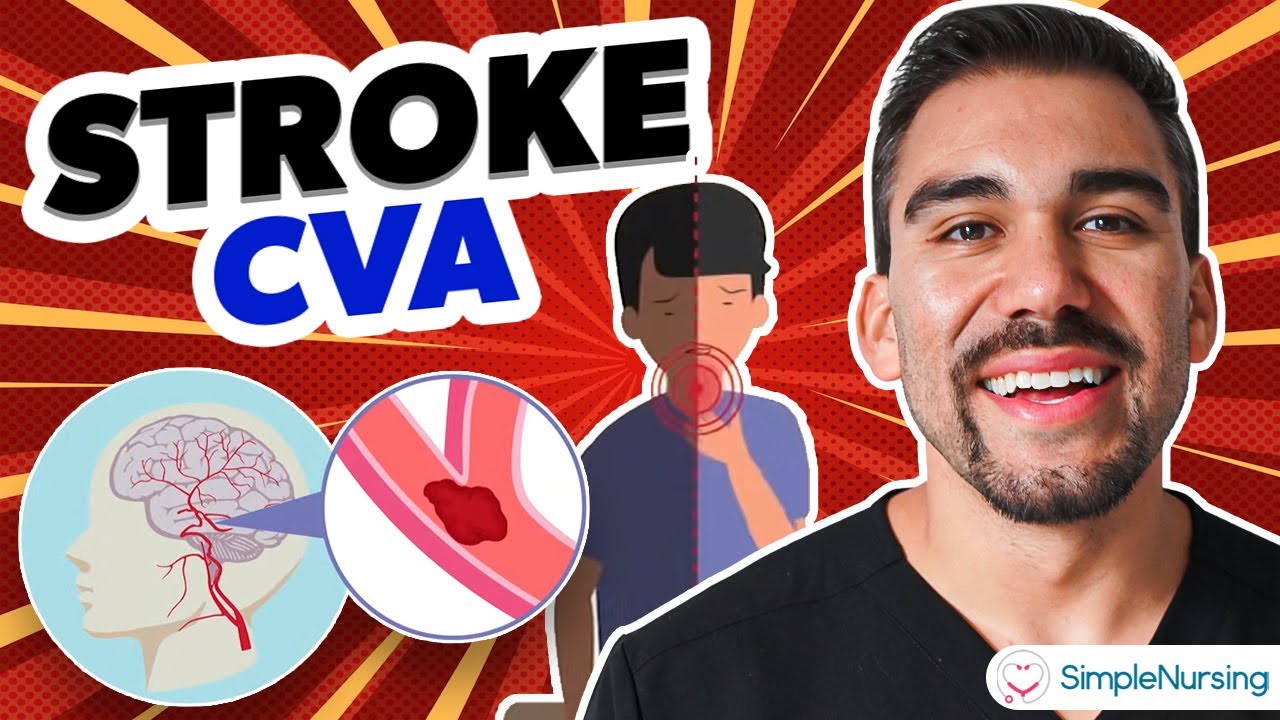Apa yang Menyebabkan Mimisan?
Summary
TLDRNosebleeds, or epistaxis, occur when blood vessels in the nose rupture. Most often caused by trauma, dry air, blood disorders, or high blood pressure, nosebleeds can be more severe depending on whether the anterior or posterior nasal vessels are affected. To handle a nosebleed, stay calm, pinch the nostrils for 10-15 minutes, and avoid lying down or looking up. Applying ice can help reduce bleeding. While most nosebleeds stop on their own, repeated or persistent cases require medical attention.
Takeaways
- 😀 A nosebleed, also known as 'epistaxis,' occurs when blood vessels in the nasal cavity rupture.
- 😀 Nosebleeds can happen from blood vessels in the front (anterior) or back (posterior) of the nose.
- 😀 Anterior nasal blood vessels are smaller and break easily, causing less severe bleeding that is easier to stop.
- 😀 Posterior nasal arteries are larger and, if ruptured, lead to more severe and difficult-to-stop nosebleeds.
- 😀 Around 80% of nosebleeds occur spontaneously, and the cause is unknown.
- 😀 Nosebleeds can also result from nasal trauma, such as injuries, picking the nose, or changes in air pressure or humidity.
- 😀 Blood disorders like leukemia, blood clotting disorders (e.g., hemophilia), and tumors in the nasal cavity can cause nosebleeds.
- 😀 People with heart and blood vessel disorders, such as high blood pressure or arteriosclerosis, are at higher risk of nosebleeds.
- 😀 Infectious diseases, like dengue hemorrhagic fever, and drug side effects, like anticoagulants (e.g., aspirin), may also lead to nosebleeds.
- 😀 To manage a nosebleed, stay calm, sit upright, and pinch the nostrils for 10-15 minutes to stop the bleeding.
- 😀 After a nosebleed stops, avoid picking the nose or blowing it too hard to prevent recurrence. If bleeding persists, seek medical attention.
Q & A
What is a nosebleed?
-A nosebleed, also known as 'epistaxis' in medical terms, is bleeding from the nasal cavity. It can occur when blood vessels in the nose rupture.
What are the two types of nosebleeds based on the location of the rupture?
-Nosebleeds can be classified into two types based on the location of the rupture: anterior (front) and posterior (back) nasal blood vessels. Anterior bleeds are more common and easier to stop, while posterior bleeds are more severe and harder to control.
What are the common causes of nosebleeds?
-Common causes of nosebleeds include nasal trauma (such as a bumped nose or frequent nose picking), changes in air pressure or humidity, blood disorders, tumors in the nasal cavity, heart and blood vessel disorders, infectious diseases like dengue, and drug side effects like those caused by anticoagulant medications.
What percentage of nosebleeds are spontaneous, and what is their cause?
-Around 80% of nosebleeds are spontaneous, meaning the cause is unknown. These occur without any clear external factor.
Why does a change in air pressure or humidity lead to a nosebleed?
-Changes in air pressure or humidity can cause the delicate skin in the nasal passages to crack, making the blood vessels dry and brittle, which can easily lead to ruptures and a nosebleed.
How do blood disorders contribute to nosebleeds?
-Blood disorders like leukemia or blood clotting issues (e.g., Hemophilia) can lead to abnormal bleeding, including nosebleeds. These conditions make it difficult for the body to stop bleeding naturally, causing recurrent or more severe nosebleeds.
How does high blood pressure contribute to more severe nosebleeds?
-High blood pressure, along with conditions like diabetes or arteriosclerosis, can weaken blood vessels, particularly in the posterior nasal region. This makes them more prone to rupture, leading to severe and difficult-to-stop nosebleeds.
What immediate actions should you take if you have a nosebleed?
-If you have a nosebleed, remain calm, sit upright (don’t lie down), and press the lower part of your nose with your thumb and index finger for 10-15 minutes. Lean your head forward to prevent blood from flowing into the respiratory or gastrointestinal tract. You can also apply an ice pack to help constrict blood vessels.
How can cold temperature help stop a nosebleed?
-Cold temperature, like that from an ice pack, causes blood vessels to constrict (vasoconstriction), which reduces blood flow and helps stop the bleeding.
What should you avoid doing after a nosebleed stops?
-After a nosebleed stops, avoid picking your nose with your fingers or blowing your nose too hard. Both actions can trigger another nosebleed.
What should you do if a nosebleed continues or happens repeatedly?
-If a nosebleed continues or occurs repeatedly, it is important to seek immediate medical attention at the nearest health facility.
Outlines

This section is available to paid users only. Please upgrade to access this part.
Upgrade NowMindmap

This section is available to paid users only. Please upgrade to access this part.
Upgrade NowKeywords

This section is available to paid users only. Please upgrade to access this part.
Upgrade NowHighlights

This section is available to paid users only. Please upgrade to access this part.
Upgrade NowTranscripts

This section is available to paid users only. Please upgrade to access this part.
Upgrade NowBrowse More Related Video

Epistaxis (nosebleed); Causes and Management

Kuliah S1 FK UNDIP Modul 4.1 Epistaksis

Malformação arteriovenosa | O que é MAV

Stroke CVA (Cerebrovascular Accident) Hemorrhagic, Ischemic NCLEX RN & LPN NURSING

Hemostasis: Control of Bleeding, Coagulation and Thrombosis, Animation

Kuliah S1 FK UNDIP Modul 4.1 Anatomi Hidung
5.0 / 5 (0 votes)